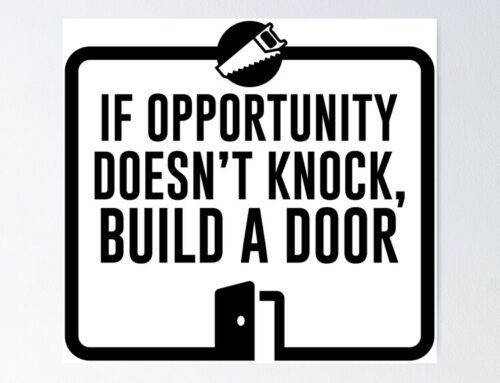Why is a marketing strategy important?
Without a defined strategy, you’ll essentially be throwing things at the wall to see what sticks. And that process will cost you money, time, and resources.
But a robust marketing strategy will reach your target audience. It has the power to turn people who’ve never heard of your brand into loyal repeat customers.
Here are just a few of the top reasons a marketing strategy is essential:
Offers Direction
A marketing strategy outlines clear goals and defines the path to achieve them. It pulls together all marketing efforts within an organization for optimal effects.
Targets the Right Audience
A well-defined marketing strategy helps you find and understand your target audience. This helps your business tailor your messaging and positioning to reach the right people at the right time.
Builds Brand Identity
A marketing strategy helps you create a consistent and cohesive brand identity. This makes it easier to align all marketing initiatives for increased brand recognition and loyalty.
Maximizes ROI
With analysis of market trends, competition, and customer behavior, marketing strategies help businesses find the most effective marketing channels and tactics to invest in. This helps businesses get the maximum return on investment.
Evaluates Performance
A marketing strategy defines key metrics and performance indicators. This makes it easier for your business to measure and track the success of marketing initiatives. It also gives you what you need to make data-driven decisions and optimize future campaigns for better results.
Marketing Strategy Process
- Conduct market research.
- Define your goals.
- Identify your target audience and create buyer personas.
- Conduct competitive analysis.
- Develop key messaging.
- Choose your marketing channels.
- Create, track, and analyze KPIs.
- Present your marketing strategy.
1. Conduct market research.
Before you can begin creating your marketing strategy, you need to gather useful data for making informed decisions. Market research is like playing detective, but instead of solving crimes, you’re uncovering juicy details about your customers.
Market research will help your businesses make data-driven decisions for your marketing strategy. It also makes it easier to understand your target market, find gaps, and make the most of your resources.
This process is essential for understanding your customers and adapting to changing trends. If you’re new to this process, this complete market research guide and template can help.
Once you have the data you need, you’ll be ready to set some marketing goals.
2. Define your goals.
What do you want to achieve through your marketing efforts?
Whether it’s increasing brand awareness, driving sales, or diversifying your customer base, well-defined goals will guide your marketing strategy.
Your marketing strategy goals should reflect your business goals. They should also offer clear direction for marketing efforts.
For example, say one of your business goals is to increase market share by 20% within a year. Your goal as a marketer could include expanding into new target markets, updating your brand, or driving customer acquisition.
Other marketing goals might be to increase brand awareness or generate high-quality leads. You might also want to grow or maintain thought leadership in your industry or increase customer value.
Defining clear goals provides direction and clarity, guiding marketing efforts toward desired outcomes. It helps with resource allocation, decision-making, and measuring the success of marketing initiatives.
This SMART goal guide can help you with more effective goal-setting.
3. Identify your target audience and create buyer personas.
To create an effective marketing strategy, you need to understand who your ideal customers are. Take a look at your market research to understand your target audience and market landscape. Accurate customer data is especially important for this step.
But it’s not enough to know who your audience is. Once you’ve figured out who they are, you need to understand what they want. This isn’t just their needs and pain points, it’s how your product or service can solve their problems.
So, if you can’t define who your audience is in one sentence, now’s your chance to do it. Create a buyer persona that’s a snapshot of your ideal customer.
For example, a store like Macy’s could define a buyer persona as Budgeting Belinda, a stylish working-class woman in her 30s living in a suburb, looking to fill her closet with designer deals at low prices.
With this description, Macy’s Marketing department can picture Budgeting Belinda and work with a clear definition in mind.
Buyer personas have critical demographic and psychographic information, including age, job title, income, location, interests, and challenges. Notice how Belinda has all those attributes in her description.
You don’t have to create your buyer persona with a pen and paper. In fact, HubSpot offers a free template you can use to make your own (and it’s really fun).
You can also use a platform like Versium, which helps you identify, understand, and reach your target audience through data and artificial intelligence.
Buyer personas should be at the core of your strategy.
4. Conduct competitive analysis.
Now that you have an understanding of your customers, it’s time to see who you’re competing with to get their attention.
To begin your competitive analysis, start with your top competitors. Reviewing their websites, content, ads, and pricing can help you understand how to differentiate your brand. It’s also a useful way to find opportunities for growth.
But how do you know which competitors are most important? This competitive analysis kit with templates will walk you through the process. It will help you choose and evaluate the strengths, weaknesses, and strategies of your competitors.
This process will help you find market gaps, spot trends, and figure out which marketing tactics will be most effective. Competitive analysis can also offer valuable insights on pricing, positioning, and marketing channels.
5. Develop key messaging.
You’ve figured out who you’re talking to, what they’ve already heard, and what they want to hear. Now, it’s time to share your brand’s unique value proposition.
In this step, you’ll craft key messaging that shows the benefits of your product or service and resonates with your target audience. This process should show off the research and work you have done up to this point. It should also incorporate your creativity, inventiveness, and willingness to experiment.
Well-crafted key messaging:
- Sets businesses apart from the competition
- Resonates with the target audience
- Is flexible enough to be consistent across all marketing channels
- Builds brand credibility
- Creates an emotional connection with customers
- Influences buying decisions
The key messaging in your marketing strategy is critical to driving engagement, loyalty, and business growth. These value proposition templates can help if you’re not sure how to draft this important messaging.
6. Choose your marketing channels.
You know what you have to say, now decide on the best marketing channels for your message. Your top goal for this stage of your strategy is to align your channel choices with your target persona’s media consumption habits.
Start with media channels you’re already using. Then, consider a mix of traditional and digital channels such as social media, TV, email marketing, podcast ads, SEO, content marketing, and influencer partnerships.
To streamline this process, think of your assets in three categories — paid, owned, and earned media.

Paid media is any channel you spend money on to attract your target audience. Most of this spending is advertising. This includes online and offline channels like:
- Television
- Direct mail
- Billboards
- Social media ads
- SEM (Search engine marketing)
- Podcast advertising
Owned Media

Owned media refers to (mostly) online channels your brand owns, including:
- Blogs
- Websites
- Organic social media
It also refers to the media your marketing team creates such as
- Videos
- Podcasts
- Ebooks
- Infographics
Earned media
Another way to say earned media is user-generated content. Earned media includes:
- Shares on social media
- Posts about your business on X or Threads
- Reels posted on Instagram mentioning your brandTo decide which marketing channels are best for your marketing strategy, look carefully at each channel. Think about which channels are best for reaching your audience, staying within budget, and meeting your goals.
For example, a business targeting a younger demographic might consider using TikTok or Reddit to reach its audience.
Don’t forget to take a look at emerging platforms and trends as you complete this review. You may also want to look at the content you’ve already created. Gather your materials in each media type in one location. Then, look at your content as a whole to get a clear vision of how you can integrate them into your strategy.
For example, say you already have a blog that’s rolling out weekly content in your niche (owned media). You might consider promoting your blog posts on Threads (owned media), which customers might then repost (earned media). Ultimately, that will help you create a better, more well-rounded marketing strategy.
If you have resources that don’t fit into your goals, nix them. This is also a great time to clean house and find gaps in your materials.
7. Create, track, and analyze KPIs.
Once you have a clear outline of your marketing strategy, you’ll need to think about how you’ll measure whether it’s working.
At this stage, you’ll shift from marketing detective to numbers nerd. With a little planning and prep, your analytics can unveil the mysteries of marketing performance and unlock super insights.
Review your strategy and choose measurable KPIs to track the effectiveness of your strategy. Create a system that works for your team to collect and measure your data.
Then, plan to check and analyze the performance of your strategy over time. This can help you refine your approach based on results and feedback.
Analyzing KPIs helps businesses stay agile, refine their strategies, and adapt to evolving customer needs.
8. Present your marketing strategy.
A finished marketing strategy will pull together the sections and components above. It may also include:
Executive Summary
A concise overview that outlines the marketing goals, target audience, and key marketing tactics.
Brand Identity
You may want to create a brand identity as part of your strategy. Brand positioning, voice, and visual identity may also be helpful additions to your marketing strategy.
Marketing Plan and Tactics
Your marketing plan is the specific actions you’ll take to achieve the goals in your marketing strategy. Your plan may cover campaigns, channel-specific tactics, and more.
Budget Allocation
Defining a budget for your marketing strategy helps you show that your planned resource allocation aligns with business goals.
Timeline and Milestones
Marketing strategies can be complex and difficult for stakeholders to understand. Creating a timeline that outlines the different tactics, milestones, and deadlines can help.
Your marketing strategy is a living document. It will need constant reviews, revisions, and optimizations to meet your long-term goals. Prepare to revise your marketing strategy at least once a year to address market trends, customer feedback, and changing business objectives.
Article by Hubspot – Kayla Carmicheal

206-391-5682
i2i@i2idirectmarketing.com
www.i2idirectmarketing.com
“…all deliveries GPS tracked…”




